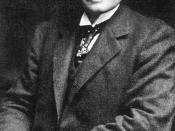Chapter 2 in the textbook is basically a review of different forms of management and how management has developed and transformed in order to suit the ever changing business world. This chapter depicts management beginning at the end of the 19th century and tells the reader how management and the process of management has developed into what it is today.
The chapter begins as I said talking about management at the end of the 19th and beginning 20th century. It speaks about the three classic approaches which were very prominent at the beginning of the 20th century. The idea behind these three classical approaches is that people are rational, and relatively honest. The classical approaches are: scientific Management, Administrative principles and bureaucratic organization.
Scientific Management which was brought to light by Fredrick Taylor, put much emphasis on careful selection and training of workers as well as supervisors which were to watch over these workers.
Taylor's main goal, as is the goal among all managers is to maximize the productivity of people at work.
Administrative principles is another classic form of a classic approach to management, Henri Fayol, his goal was to more focused on management than lower level workers, Fayol believed management could be taught, his focus was based on the improvement of management.
The third is bureaucratic organization, it derived from Max Weber's Characteristics of bureaucracy, his belief was that organizations would have optimum performance when under a bureaucratic form; this however did have some disadvantages, such as a vast amount of paper work and flexibility.
As the 20th century went on new ways of management began to emerge, a focus on the individual led to management to think more on the human side of things. During this time period studies done by experts in the fields of...


